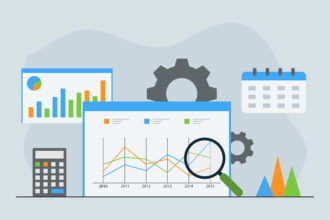Most companies have known for years that big data can be invaluable to their organizations. However, far fewer try to use it effectively. Many don’t have a formal data strategy and even fewer have one that works. According to one study conducted last year, only 13% of companies are effectively delivering on their data strategies.
There are a lot of reasons data strategies fail. One of the biggest reasons is that companies don’t have realistic objectives. Another problem is that they don’t dedicate their resources to collecting the right data. You can’t afford to make this mistake.
Gathering up a lot of data is good as long as it’s useful and can be leveraged to help you make the best business decisions. In today’s digital environment, key decision-makers can no longer rely on their gut instincts to make choices. In addition, your competitors will be using data to help guide them in the right direction, so you must incorporate this strategy into your business. This will allow you to create brand-new opportunities to increase revenue.
How to Determine the Best Data to Use
To figure out which data you should be accumulating, it’s important to look at your business goals and objectives and then work backward from there. What are the key targets you want to reach, and what process are you using to get there? Begin by identifying data sets that you need and then start collecting this vital information. You also need to make sure that you have the right technology to handle these data sets.
One of the best ways to get information is to survey people to get their input. For example, you can send out invitations to interview people who have purchased one of your products to learn why they bought it and learn more about their buying habits. Another great way to get valuable information is to ask your social media channels. People love to give opinions and are more likely to talk on a social website where a conversation is less formal than a survey.
Invest your time in analyzing the data required to help you reach your objectives. Don’t waste a lot of time sorting through supplementary data that won’t give you the actionable insights you need. Instead, make a list of the key questions that need to be answered to reach certain goals and concentrate on getting them answered. Too much data can be just as dangerous to your business as not collecting enough of it. When you have a lot of information that isn’t relevant, it can smother you if you don’t remain laser-focused.
Adopt a systematic approach to collecting and managing your data. Use the important information and discard the rest. The overall goal is to give you the answers to support the growth of your business. That may mean answering questions that address converting leads into customers, streamlining the buying journey, getting more email subscriptions to your newsletter, etc.
You may also want to collect information to predict trends to outdo your competitors. Find out more about the problems people are having in your niche so that you can provide solutions for them.
A great example of this approach would be the invention of the anti-glare screen protector. Somebody noticed that people were having problems with glare on their mobile devices and came up with a solution for it. When you can spot a need in your niche before your competitors do, you’ll be on the right track. It all starts with getting the right data and then moving forward from there.
Data Quality and Relevance is Crucial for Any Big Data Strategy
Big data is very useful to many organizations, but only if they are utilizing it correctly. You have to make sure that you are collecting the right data. You need to be discerning during the data collection process.










